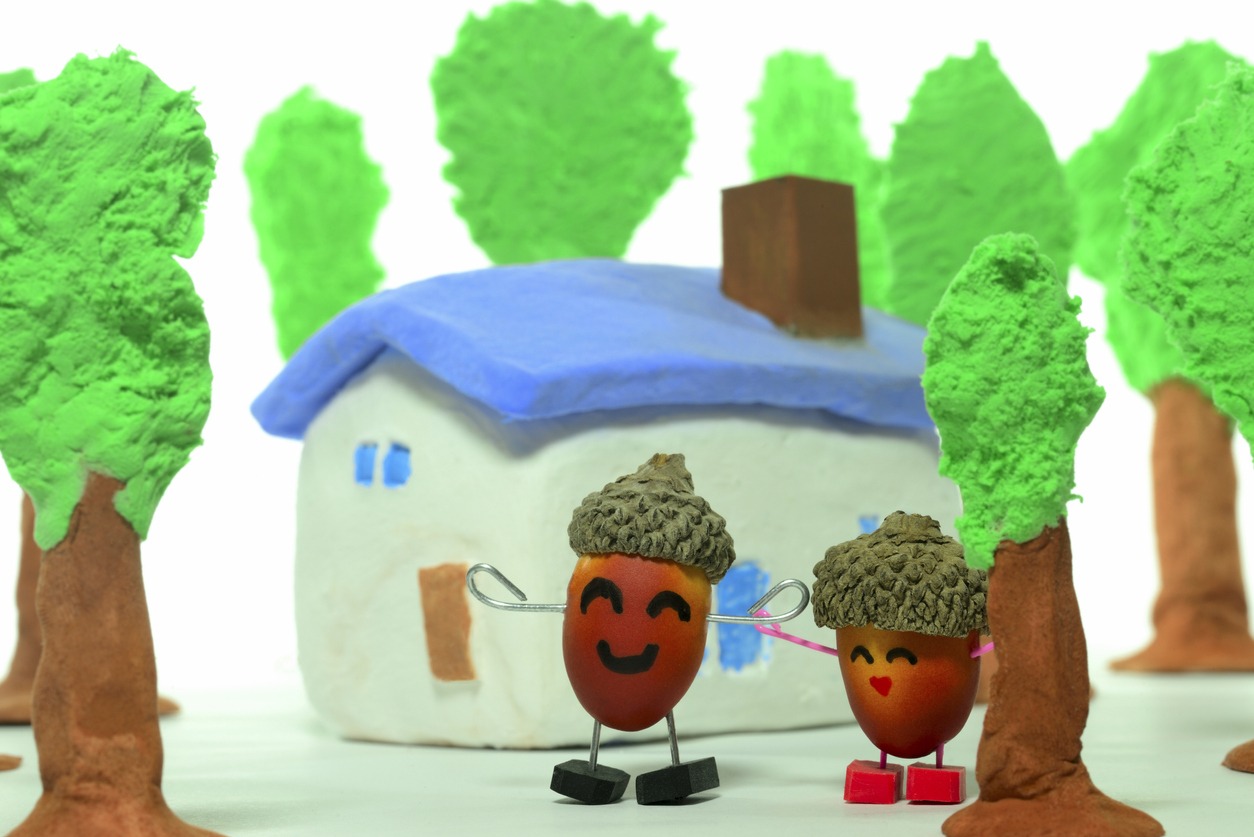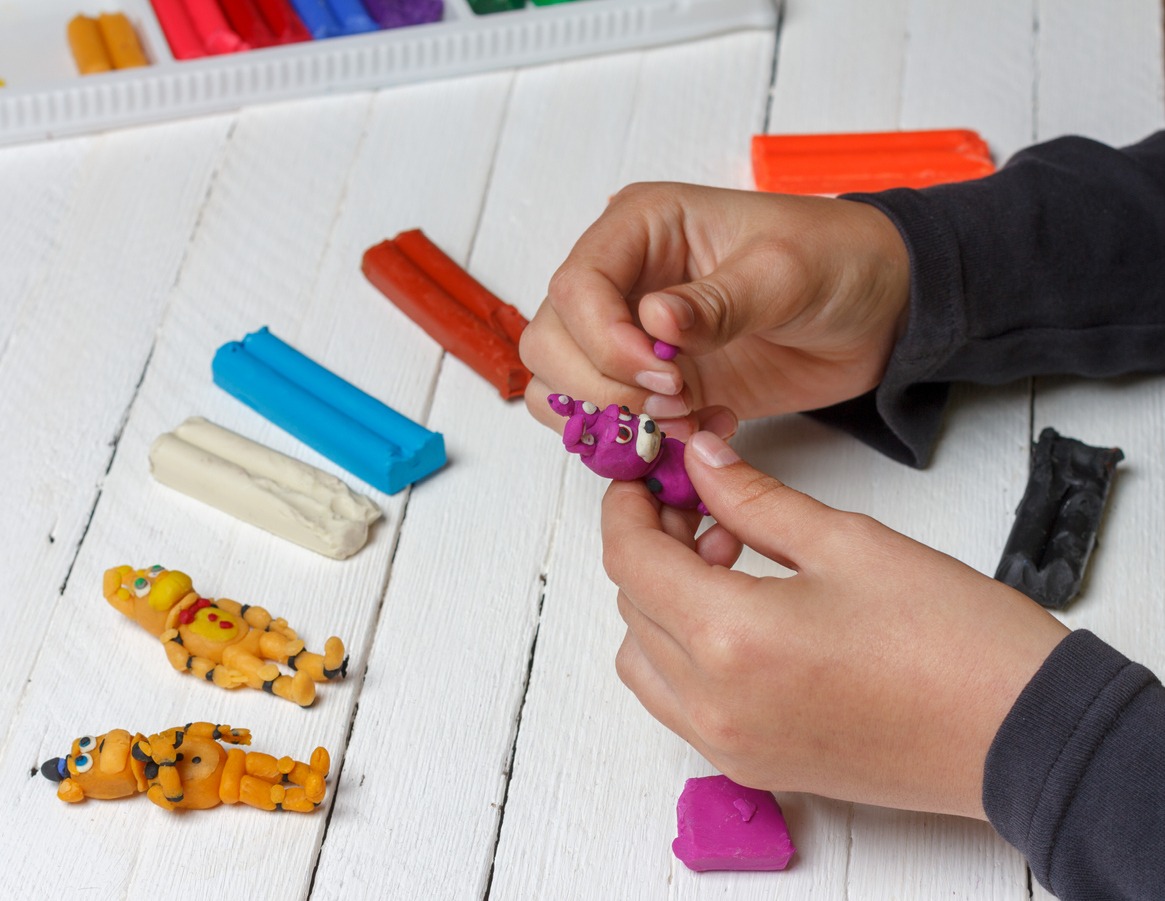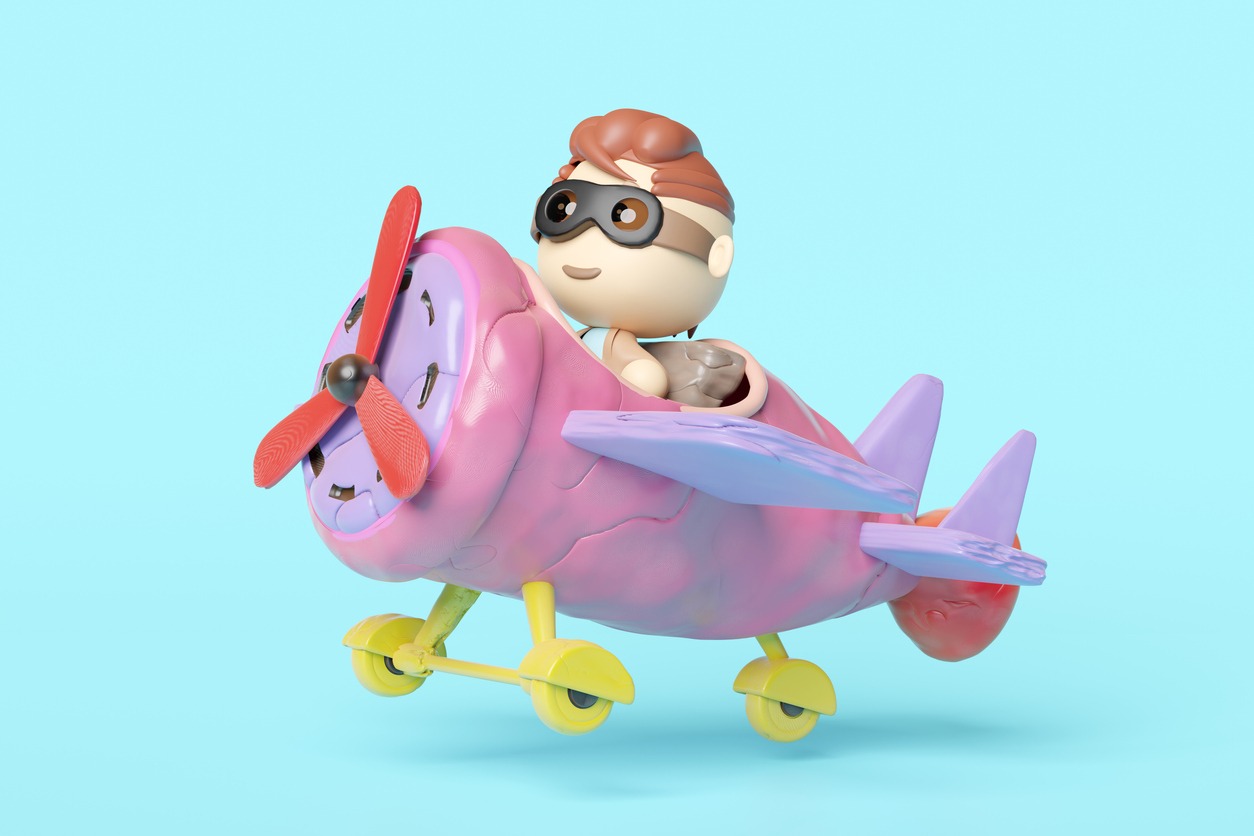Claymation, a distinctive form of stop-motion animation, brings the malleable world of clay to life through the careful and meticulous movement of figures frame by frame. In this article, we delve into the fascinating origins and evolution of Claymation, highlighting the innovative pioneers who shaped this unique art form.
Their creative vision and technical expertise in sculpting and animating clay have left an indelible mark on the animation industry, influencing generations of animators and captivating audiences worldwide. Read on and explore the rich history of Claymation and the creative minds behind its most iconic works.
Early History of Clay Animation
Clay animation, often known as “Claymation,” has a rich and fascinating early history that traces back to the early 20th century. This unique form of stop-motion animation involves shaping malleable clay or a similar material into characters and scenes and then photographing them frame by frame to create the illusion of movement.
The origins of clay animation are often linked to the pioneering work of Art Clokey, who is best known for creating the iconic character Gumby in the 1950s. However, the roots of clay animation predate Clokey’s work. One of the earliest known clay animation films was “Modeling Extraordinary,” made by the Blackton brothers in 1912. This film showcased the potential of clay as a medium for storytelling and animation.
In the 1920s and 1930s, the art form gained more traction. Helena Smith Dayton, an American artist, is credited with being one of the first to use clay animation in a film. Her 1917 film “Romeo and Juliet” was a breakthrough, as it was the first clay-animated film to be publicly shown. This film paved the way for further experimentation and development in the medium.
Another significant contributor to the early development of clay animation was the German animator Lotte Reiniger. While she is best known for her silhouette animation, her techniques and storytelling style influenced the world of animation broadly, including clay animation.
The 1930s saw further advancements with artists like Joseph Sunn, who created “The Penwiper,” a film that demonstrated a more sophisticated use of clay modeling and stop-motion techniques. This period also witnessed the rise of Willis O’Brien, who employed clay and stop-motion for special effects in films like “King Kong” (1933), though his work primarily involved models rather than pure clay animation.
World War II brought a temporary decline in the production of animated films due to resource constraints. However, post-war, the art form saw a resurgence. This period marked the emergence of Art Clokey’s “Gumby,” which became a cultural icon and brought Claymation into mainstream entertainment. Clokey’s work, particularly the “Gumby” series, showcased the flexibility and charm of clay animation, making it popular with a wider audience.
The early history of clay animation is a story of innovation and creativity. It’s a journey marked by the contributions of several pioneering artists who explored and expanded the boundaries of this unique art form. Their legacy paved the way for future generations of animators and storytellers, inspiring a world of imagination and creativity in clay animation.
The Pioneers of Claymation
The world of Claymation, a whimsical and imaginative form of stop-motion animation, owes its existence to a handful of pioneering artists who explored and mastered this unique medium. These pioneers not only developed the techniques that define Claymation but also set the stage for its enduring popularity and artistic evolution.
Art Clokey
Often hailed as the father of modern Claymation, Art Clokey’s contribution to the field is monumental. In the early 1950s, Clokey created “Gumbasia,” a short film influenced by his mentor, Slavko Vorkapić, a film director at the University of Southern California. This experimental film led to the creation of “Gumby,” a green clay humanoid figure that became an iconic character in American pop culture. “Gumby” and his horse “Pokey” went on to star in their own television series, charming audiences with their adventures and pioneering the use of clay in televised animation.
Will Vinton
Another key figure in the world of Claymation was Will Vinton, who coined the term “Claymation.” Vinton’s work in the 1970s and 1980s significantly advanced the art form. His most notable work includes the California Raisins advertising campaign and the film “The Adventures of Mark Twain.” Vinton’s studios also contributed to numerous other projects, including music videos and commercials, showcasing the versatility and appeal of Claymation.
Nick Park
A prominent figure in Claymation, Nick Park is best known for creating the “Wallace and Gromit” series. His work at Aardman Animations helped to popularize Claymation on an international scale. Park’s films, including “The Wrong Trousers” and “A Close Shave,” have been praised for their inventive storytelling and meticulous attention to detail. Park’s contribution extends to feature films as well, with “Chicken Run” being a notable example.
Peter Lord
Co-founder of Aardman Animations, along with David Sproxton, Peter Lord, has been influential in bringing Claymation to the forefront of animation. His work, often in collaboration with Nick Park, has pushed the boundaries of clay animation, blending humor with a distinctive British charm. Lord’s contributions are not just in film but also in expanding the reach of Claymation into television and advertising.
Bruce Bickford
Known for his surreal and often complex animations, Bruce Bickford gained fame in the late 1970s and 1980s for his work with Frank Zappa. His unique style, characterized by fluid transformations and intricate detail, brought a new level of artistry to Claymation. Bickford’s films, though not mainstream, have influenced animators looking for a more avant-garde approach to the medium.
Henry Selick
While often associated with stop-motion animation in general, Henry Selick has made significant contributions to clay animation. Best known for directing “The Nightmare Before Christmas” (produced by Tim Burton), Selick’s work is noted for its darkly whimsical style and complex characters, expanding the narrative and aesthetic possibilities of Claymation.
These pioneers, through their creativity and innovation, have not only shaped the art of clay animation but also ensured its place as a beloved and enduring form of storytelling. Their legacy is seen in the numerous animators and artists who continue to be inspired by the magic of Claymation.
Technical Innovations in Claymation
Claymation, with its distinctive charm and tactile nature, has undergone a remarkable evolution, particularly through various technical innovations. These advancements have expanded the possibilities of storytelling and visual expression in this unique form of animation.
- Color and Textural Variety in Clay: Initially, clay used in animation was quite basic, limiting the visual appeal. Innovations in clay composition have led to a broader range of colors and textures, allowing for more detailed and expressive characters and environments. This development has been crucial in enhancing the visual depth and appeal of Claymation films.
- Replacement Animation Techniques: One significant innovation in Claymation is the use of replacement animation. Instead of manipulating a model for each movement, animators create multiple interchangeable parts (like mouths, eyes, or limbs). This technique allows for smoother, more varied, and expressive animations. It has been widely used in films to convey complex emotions and actions more effectively.
- Digital Frame Capture: The transition from film to digital frame capture has revolutionized Claymation. Digital cameras and software allow animators to instantly review and edit their work, significantly speeding up the process and increasing precision. This innovation also facilitates the integration of Claymation with other digital elements and effects, broadening the creative possibilities.
- 3D Printing for Model Making: 3D printing technology has brought a significant shift in Claymation. It allows for the precise creation of complex and detailed models, which would be extremely time-consuming or impossible to achieve by hand. This technology is particularly useful in replacement animation, where numerous parts of varying expressions and postures can be printed.
- Motion Control Cameras: The use of motion control cameras in Claymation has enabled more dynamic and complex camera movements. These computer-controlled cameras can be programmed for specific movements, ensuring consistency and precision in shots, which is particularly crucial for the labor-intensive frame-by-frame shooting process of Claymation.
- Computer-Generated Imagery (CGI) Integration: While Claymation is celebrated for its physical, handmade quality, the integration of CGI has opened new doors. CGI is used for background elements, complex effects, or to enhance the fluidity of movement in characters. This synergy of traditional Claymation and modern CGI allows for more ambitious storytelling while retaining the charm of clay animation.
- Enhanced Lighting Techniques: Advances in lighting technology and techniques have allowed animators to create more mood, depth, and atmosphere in their Claymation films. Sophisticated lighting setups can mimic natural light or create dramatic effects, adding an additional layer of professionalism and aesthetic appeal.
These technical innovations have not only streamlined the production process of Claymation but have also enriched its artistic potential. They enable animators to push creative boundaries, bringing more complex, engaging, and visually stunning stories to life through the medium of clay.
Iconic Claymation Works
Claymation, the unique and captivating form of stop-motion animation using clay, has given us some truly iconic works over the years. These creations stand out not only for their technical innovation but also for their enduring charm and storytelling prowess. Here are some of the most iconic Claymation works that have left an indelible mark on the world of animation and popular culture:
- Gumby: Created by Art Clokey in the early 1950s, Gumby is one of the earliest and most beloved Claymation characters. With his distinctive green color and flexible shape, Gumby, along with his sidekick Pokey, the horse, embarked on various adventures that charmed audiences of all ages. Gumby became a cultural icon, symbolizing the creative and whimsical potential of clay animation.
- Wallace and Gromit: This British series, created by Nick Park of Aardman Animations, features the adventures of Wallace, an eccentric inventor, and his intelligent dog, Gromit. The series is celebrated for its dry humor, inventive plots, and the endearing relationship between the main characters. Films like “The Wrong Trousers” and “A Close Shave” have received critical acclaim and have a dedicated following worldwide.
- Chicken Run: Also produced by Aardman Animations, “Chicken Run” (2000) is a feature-length Claymation film directed by Nick Park and Peter Lord. It tells the story of a group of chickens attempting to escape from a farm before they can be turned into chicken pies. The film is notable for its clever humor, engaging story, and is often recognized as a significant achievement in Claymation filmmaking.
- The Adventures of Mark Twain: Directed by Will Vinton in 1985, this Claymation feature film is known for its complex and philosophical narrative. The film explores various works of Mark Twain through a series of vignettes, blending humor with deeper themes. Its technical prowess and ambitious storytelling make it a standout work in the genre.
- Celebrity Deathmatch: A somewhat different take on Claymation, this MTV series created by Eric Fogel in the late 1990s features Claymation versions of celebrities fighting each other to the death in a wrestling ring. The show is known for its dark humor and satirical take on celebrity culture.
- Coraline: Directed by Henry Selick and based on Neil Gaiman’s novel, “Coraline” (2009) is a dark fantasy film that utilizes Claymation techniques to create a hauntingly beautiful and eerie world. The film is praised for its stunning visuals and compelling narrative.
- California Raisins: Created by Will Vinton, the California Raisins were Claymation characters that initially appeared in a series of commercials for the California Raisin Advisory Board. Their popularity led to a TV special and a series, making them one of the most recognized Claymation creations in advertising.
The Artistic Legacy of Claymation Pioneers
The artistic legacy of Claymation pioneers is both profound and multifaceted, significantly influencing the realms of animation, film, and visual storytelling. These pioneers, through their creativity, innovation, and dedication, have not only shaped the evolution of Claymation but also left an indelible mark on the broader landscape of art and entertainment.
- Expansion of Animation Techniques: Pioneers like Art Clokey, Will Vinton, and Nick Park expanded the technical possibilities of stop-motion animation. They pushed the boundaries of what could be achieved with clay, introducing new techniques such as replacement animation and sophisticated camera movements. This technical innovation allowed for more expressive and complex storytelling, setting new standards in the animation industry.
- Artistic Expression and Storytelling: The pioneers of Claymation brought a distinctive artistic voice to their work. Their creations often featured unique characters and whimsical worlds that resonated with audiences of all ages. The narratives in their works ranged from simple and charming to complex and thought-provoking, showcasing Claymation as a versatile medium for storytelling.
- Cultural Impact: Characters like Gumby, Wallace and Gromit, and the California Raisins transcended the realm of animation to become cultural icons. These characters and the stories they inhabit have left a lasting impression on popular culture, influencing everything from advertising to fashion, and even language.
- Inspiring Future Generations: The work of Claymation pioneers has inspired countless artists and animators. The success and popularity of their creations demonstrated the viability and potential of Claymation as an art form, encouraging new talents to explore and innovate in this medium. The legacy of these pioneers can be seen in the continuing popularity and evolution of stop-motion and clay animation in film and television.
- Educational Influence: Beyond entertainment, Claymation has been used as an educational tool, helping to simplify complex concepts and engage younger audiences. The tactile and approachable nature of clay animation makes it an effective medium for storytelling and education.
- Integration with Other Art Forms: Claymation pioneers were not afraid to blend their work with other art forms, such as live-action footage, traditional animation, and digital effects. This interdisciplinary approach has broadened the scope of Claymation, allowing it to evolve continuously and remain relevant in a rapidly changing media landscape.
- Influence on Visual Arts: The aesthetic of Claymation, characterized by its texture and three-dimensionality, has influenced other areas of visual arts. It has inspired sculptors, painters, and digital artists, contributing to a cross-pollination of ideas and techniques across different artistic disciplines.
Conclusion
In conclusion, the pioneers of Claymation have left a remarkable legacy, transforming a simple medium into an expressive art form full of possibilities. Through their innovative techniques, captivating storytelling, and enduring characters, they have not only enriched the world of animation but also touched the hearts of audiences across generations. Their contributions continue to inspire new artists, ensuring that the art of clay animation remains vibrant and evolving. As we reflect on their impact, it’s clear that the whimsical world of Claymation will continue to charm and amaze viewers for many years to come.



